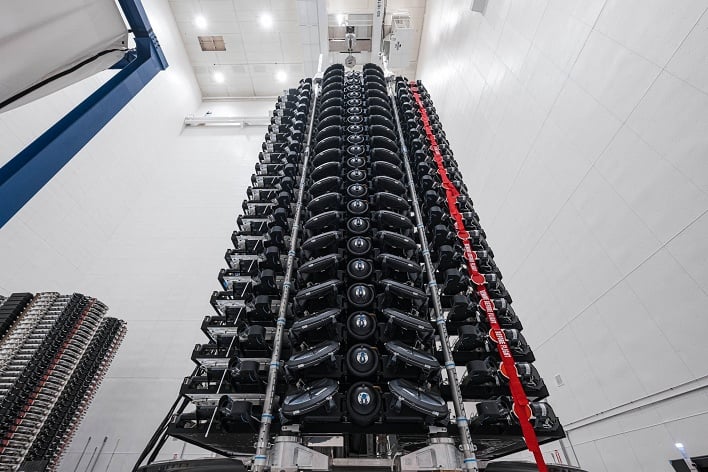Musk Shares Stunning Shot Of SpaceX's First V2 Mini Starlink Satellite Hovering Over Earth
SpaceX's Starlink satellite-based broaband service has been providing internet access to many around the world, especially in more remote or rural areas where there are little to no options for internet connectivity. The satellite-based internet service has also been providing critical internet service to those in Ukraine, since the early part of the war against Russia. As more satellites go up, it seems more people are wanting to take advantage of the service. This has left many either on a waitlist, or using the RV version of the satellite uplink. SpaceX aims to help remedy the situation with a new version of its satellite, the V2 Mini.
The new V2 Minis are larger and more capable than earlier generations, according to SpaceX. There will be two separate versions of the V2, the V2 Mini which is compatible with the Falcon 9 launch vehicle and the full-version V2 which is compatible with the Starship launch vehicle. The V2 Minis are a little smaller than the full version that will launch on the Starship launch vehicle, but are still capable of providing 4x the capacity of previous generations.
The new satellites are expected to bring faster speeds to more users. SpaceX says that the new satellites have significantly more throughput per satellite than first-gen systems, meaning end users will receive more bandwidth and increased reliability, and each satellite can hanlde more users.

The next scheduled launch to send more satellites up into space is scheduled for March 1, 2023. The payload of 51 satellites will be launched aboard a Falcon 9 from Space Launch Complex 4 East at Vandenberg Space Force Base in California. The launch can be viewed live via the SpaceX website.



